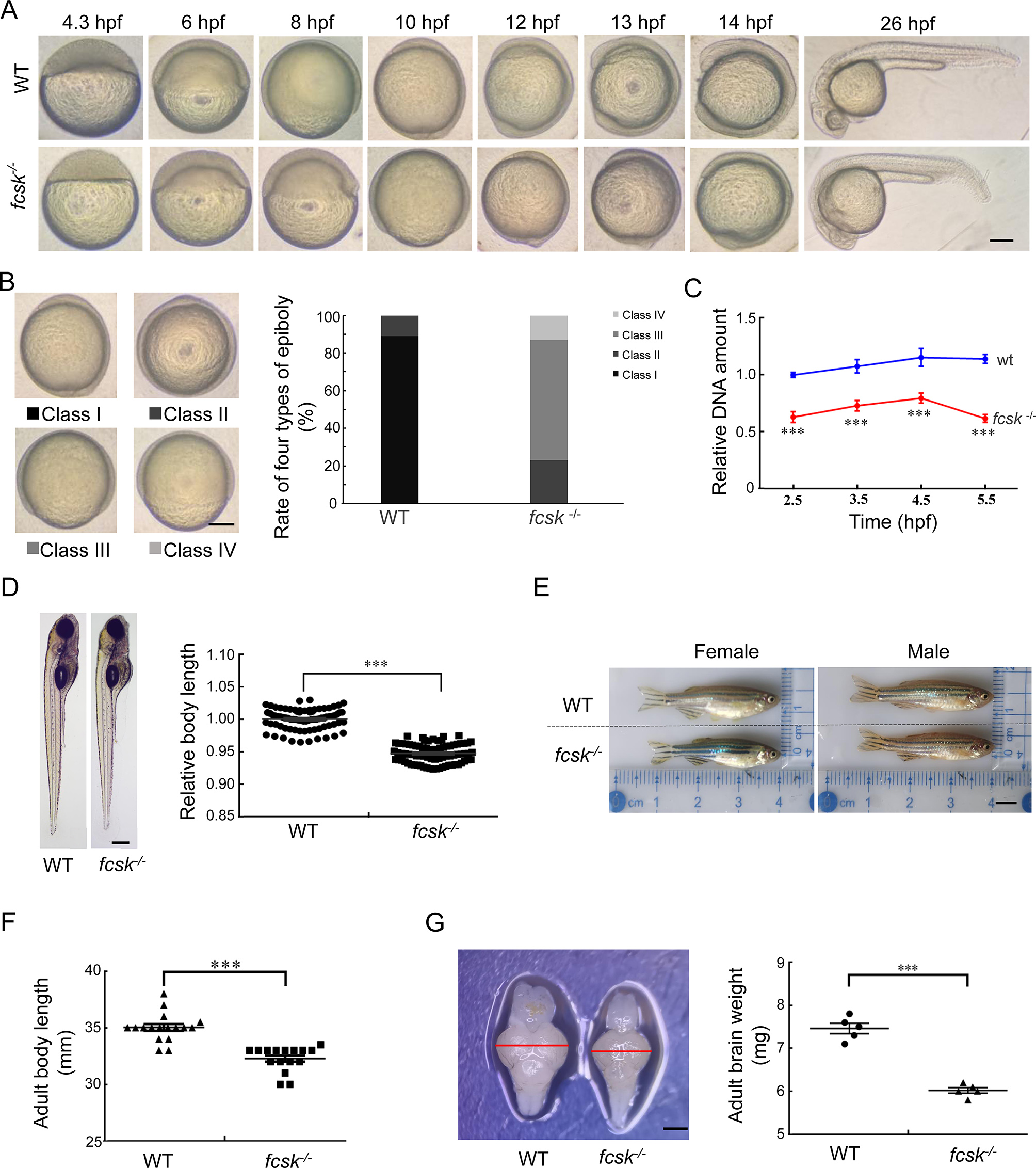Fig. 2 Developmental retardation and brain atrophy in fcsk−/− zebrafish A: Representative images showing developmental delay in fcsk−/− embryos from 4.3 hpf to 26 hpf. hpf: Hours post-fertilization. Scale bar: 200 µm. B: Classification of epiboly progression at 10 hpf into four stages: Class I (epiboly completed, tail bud formed), Class II (epiboly completed, no tail bud formed), Class III (approximately 85% epiboly), and Class IV (approximately 60% epiboly). The proportion of these types was quantified in WT and fcsk−/− embryos (100 per group). Scale bar: 200 µm. C: Quantitative DNA content analysis in WT and fcsk−/− embryos pre- and post-MBT (2.5–5.5 hpf). Thirty embryos were collected at each time point under identical culture conditions. n=3. D: Body length comparison of WT and fcsk−/− larvae (5 dpf, 80 larvae per group). Scale bar: 200 µm. E: Body length comparison of WT and fcsk−/− adult zebrafish (4.5 mpf, female and male). mpf: Months post-fertilization. Scale bar: 0.5 cm. F: Statistical analysis of adult body length in 17 WT and 16 fcsk−/− zebrafish. G: Brain size (left) and weight (right) of fcsk−/− zebrafish (4.5 mpf). n=5. Scale bar: 200 µm. Mean±SEM. ***: P<0.001.
Image
Figure Caption
Figure Data
Acknowledgments
This image is the copyrighted work of the attributed author or publisher, and
ZFIN has permission only to display this image to its users.
Additional permissions should be obtained from the applicable author or publisher of the image.
Full text @ Zool Res

